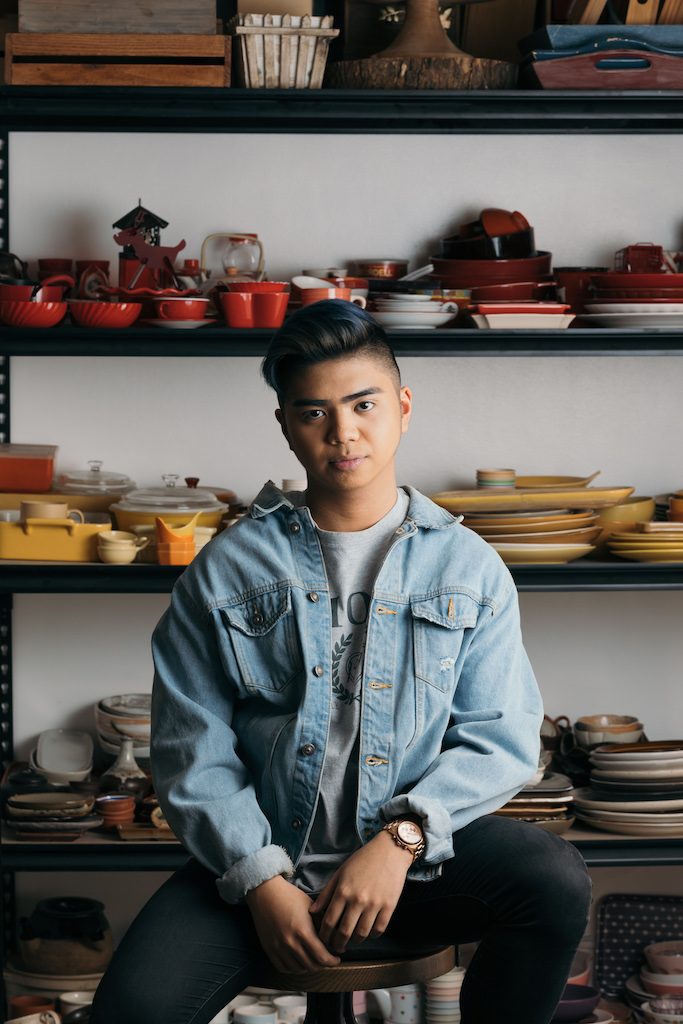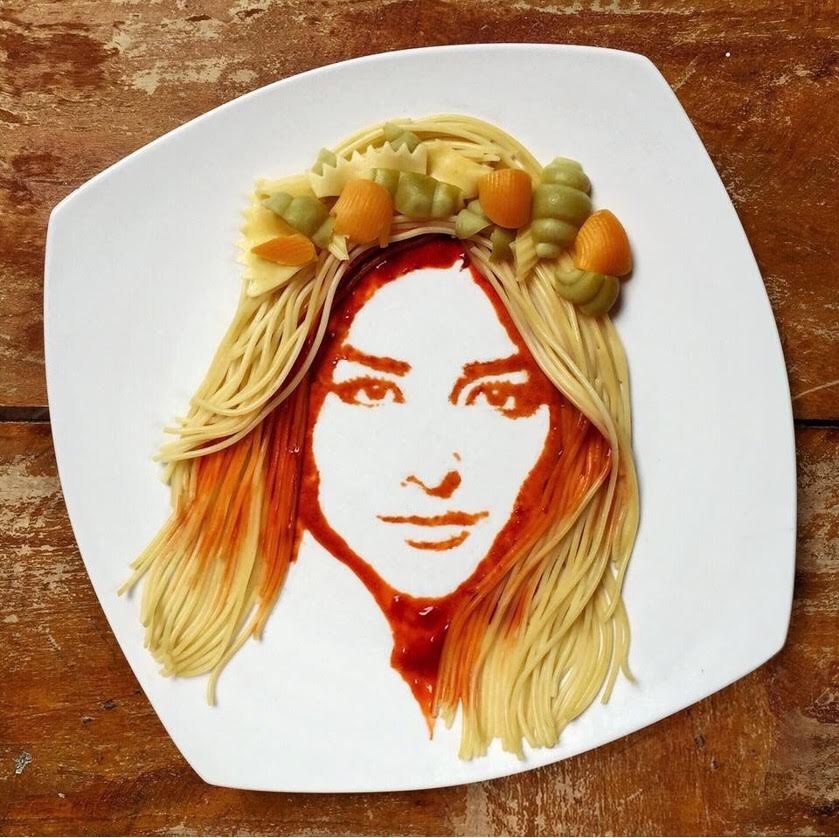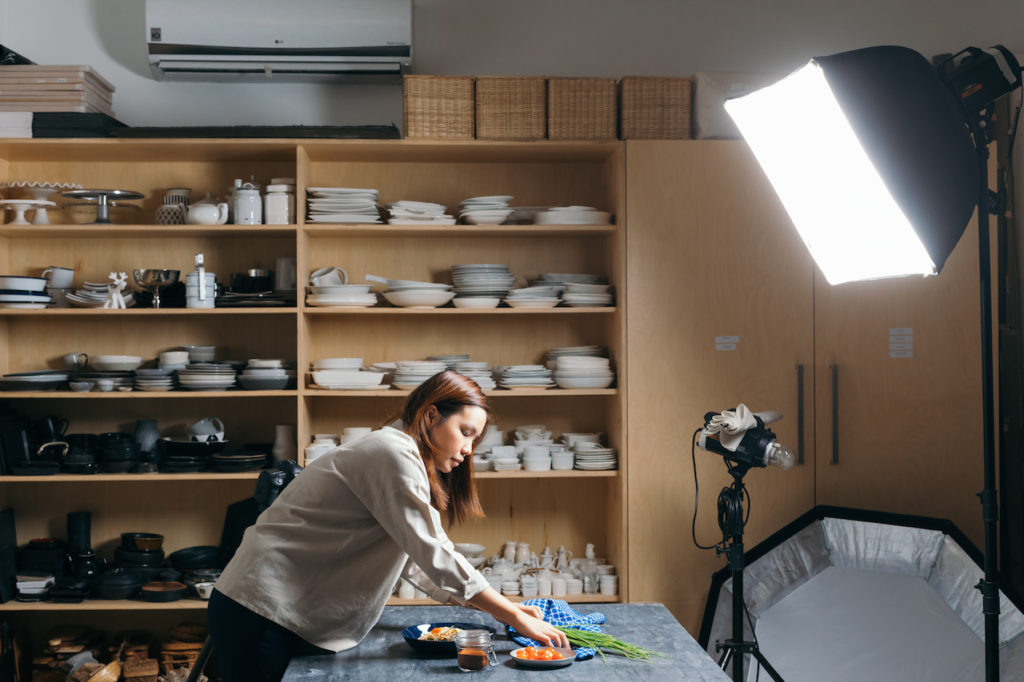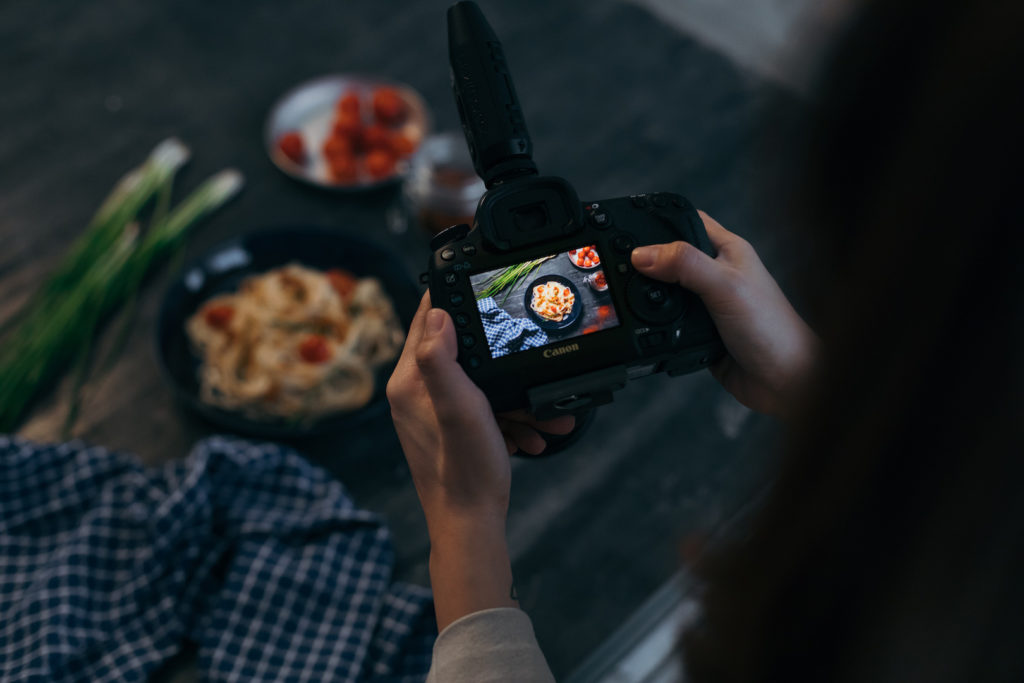When we were kids, we were taught never to play with our food. That that’s not what food is meant for. But as we explore the world and join the working class, breaking this particular table rule may actually earn a decent living.
Pretty plates
Food styling is one of the most in-demand careers in the food and beverage industry. Every restaurateur or chef is well aware that the more attractive a dish looks, the more likely it is to be sold, eaten, and enjoyed.
For Katherine Jao, whose career in food styling began in 2009, immersing in the profession before it gained the prestige it enjoys today was challenging. “I learned mostly from my own culinary experience and with the help of books and seminars like the one by Delores Custer,” she says. There was a dearth of food styling opportunities available, as people were not aware of the value of the craft. The self-taught stylist had to create opportunities for herself. Jao, together with friends, co-founded Pepper.ph as an “exercise of showing people what we can do.”
The website eventually became one of the leading food sites in the Philippines and to this day, the three partners use it as an avenue to express their creativity. Clients are now a dime a dozen for Jao, whose styling portfolio includes an assortment of her work for food magazine editorials and restaurant and corporate clients, the most recent of which includes Jollibee’s strawberry-flavored fries.
“Be resourceful. You need to know where to get mangoes or avocados when they’re not in season, where to get cherry tomatoes that are still on the vine,” says Katherine Jao.
Armed with her styling arsenal—the basics of which comprise “the tweezer, spray bottle, food torch, a knife, and I always need to have my wet towel with me”—Jao is now the in-house stylist of PhotoKitchen and continues to build on her freelance work, which includes developing recipes for clients. Even with her wealth of experience, she reveals that she still finds Filipino dishes to be the hardest food to style. “Masarap siya, but everything is just a blob of brown or orange or dark colors, or it’s minced like sisig or bopis. I was lucky to have enough clients who required me to style a lot of Filipino food so I’ve gotten used to it.”
A business management graduate, Jao finds food styling to be infinitely rewarding. “I get to meet and work with all sorts of people, and I get to know more about the food industry, the food brands, and as a consumer, I’m more conscious about why a product is priced the way it’s priced—because you’re really paying for something of higher value. There are some brands that I’ve styled that I wouldn’t have bought before, and vice versa,” she says.
Her advice to aspiring food stylists? “Have patience—not only with food but with people. Be flexible and adaptable because you’ll encounter different scenarios and you’ll find that there is no one way of doing this. And most importantly, be resourceful. You need to know where to get mangoes or avocados when they’re not in season, where to get cherry tomatoes that are still on the vine. You always need to have a backup plan because not all executions will work, and you have to have a Plan B, stat.”
Plating art

Eighteen-year-old André Manguba saw spaghetti as something other than just a good meal. He imagined it as a new, out-of-the-box medium for artistic self-expression. The self-taught artist initially drew using colored pencils, but an on-the-job internship at a pasta company eventually led to the Instagram fame Manguba is currently enjoying. “I was assigned to take care of their social media account, and given the task, I thought of ways I can promote their pasta products. I decided to combine art with pasta,” he says. His first food portrait subject—Daniel Padilla drawn with ketchup and spaghetti—eventually caught the attention of the celebrity fan circuit.
He has since moved on to create pasta portraits of popular personalities like Liza Soberano, Kathryn Bernardo, Miss Universe Pia Wurtzbach, and a tribute to the late Carrie Fisher when she passed away in 2016, and has attracted the attention of such organizations as the History Channel and 20th Century Fox, the latter having commissioned his food art to create spaghetti portraits of Brooke, Shangri Llama, and Julian of “Ice Age: Collision Course.”
It’s a craft that takes three to four hours to complete—mostly at night, the time of day Manguba says he feels most productive—and requires utmost precision. “I first sketch the portrait into the plate with a pencil, and then I use a barbecue stick to apply the ketchup or spaghetti sauce. It takes a little too long to apply because it’s really detailed and crucial to know the details of the face for it to look like the real thing,” explains Manguba. The pasta is often added last. “I usually use it for the hair. The finished work stays refrigerated overnight before I take a photo of it in the morning, when there’s natural light.”

The best part of the whole process, Manguba says, has been meeting his subjects. “I didn’t expect my art would lead me to meeting the people I drew. When I drew Kathryn and Liza, I eventually met them in person to present my food art. I was really just doing it for fun, but I’m thankful people have come to appreciate my art.”
While there have been naysayers getting on his case about food waste—he admits he keeps his artwork only for a week—the positive reactions to Manguba’s art as well as being featured among other Filipino talents on the History Channel, have encouraged him to keep at his art. The next step? “Maybe bigger plates, landscapes, other ingredients… people have been encouraging me to open a café that serves food art,” he says. “At this point, this is really just a hobby, but I’m open to the possibilities.”
Calling the shots

An Instagram post is one thing, but taking professional photographs of food is an entirely different animal. Flip to a random page of a food magazine and you’ll find there are different elements involved in making the single photograph of halo-halo look as enticing as can be. Manipulating the amount of light trained on the subject, finding the proper composition for colors and cutlery, and sourcing props for backgrounds are just some of the things food photographer Mylene Chung considers before pressing the shutter button of her camera.
The food photographer behind the mouthwatering shots posted on Pepper.ph and PhotoKitchen started her career in the glamorous world of fashion, shooting people for portraits and fashion editorials, but the self-professed introvert admits to “never feeling fashion photography was really for me. I found it hard to direct models on what I wanted them to do. I’d make them pose a certain way but the shots wouldn’t come out the way I envisioned them to be.”
Taking photos of food—a career that started serendipitously when a one-off shoot with an unknown cupcake brand led to Red Mango and Bizu commissioning her to do their menus—felt more natural. “It came really easy. I feel I have a connection with food—it’s so easy to mix colors together, and when I look at a dish I can already tell what kind of plate, surface, or element would go very well with it,” shares Chung, adding that she finds food photography to be a friendlier industry.
“We love sharing different techniques with each other. Personally, I love seeing how others work so I can learn from their techniques and the new things they do. When you get too centered on your own craft, you don’t get to see how other people interpret the whole artistry of photography anymore,” she says.

For Chung, food photography is never straightforward. Inspiration, she says, can come from anywhere—traveling, visiting a florist, looking at different brands and magazines. “I have an obsession with catalogs,” she says. “I’d randomly go to different furniture shops and just grab these catalogs because even if they’re not related to food, I love seeing how they mix and match colors and create their setups. They’re really great sources of ideas.”
“I’d randomly go to different furniture shops and just grab these catalogs because even if they’re not related to food, I love seeing how they mix and match colors and create their setups. They’re really great sources of ideas,” says Mylene Chung.
Ten years into her career, Chung still exudes the same exuberance a first-timer would when talking about her craft, pointing out that sometimes people take food photography too seriously. “They feel creating a food photograph needs so much work, so much time—even my clients feel that way sometimes. They want things clean, and a certain crumb that’s out of place needs to be deleted. But sometimes it’s these little messes and imperfections that give more character to a photograph. Food is something that makes people hungry, it drives people to feel something. On its own, it can already give you that feeling. So people should step back and relax a bit—it’s just food.”
Originally published in F&B Report Vol. 15 No. 1











































